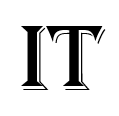Local communication options that use technology: Coaxial Cable, Fibre Optics Cables, Twisted Pair Cables, Router, Switch, Servers, Firewall
Local communication can be done in many ways using technology. For our internal network, we can use both wired and wireless technology.For an internal network, wired technology is better than wireless technology because there is less interference with wired technology.
Here, we’ll talk about different types of wired technology.Wires are used to connect the devices in wired technology. There are different kinds of wire that we can choose from.
Coaxial cable
Two copper wires make up coaxial cable. The centre wire is made of a solid conductor and is wrapped in an insulating sheath. The sheath is wrapped around the other one. All of this is covered by plastic cover. It has up to 450 mbps of bandwidth.
Local area networks can employ coaxial cable. This cable gives a path for transmission that is free from interference. It sends out data signals at a high frequency.
Strength:
High-frequency data signals are sent and received.As the top layer is made of plastic, electromagnetic interference is less likely to happen.
Weakness: Because it is thicker, it is hard to put in place.
Twisted Pairs Cable
It is made of copper wires wrapped in plastic. So that there is less electromagnetic interference between the two wires, they are twisted around each other. Shielded Twisted Pair (STP) Cable and Unshielded Twisted Pair (UTP) Cable are the two types of twisted pair cable. Less magnetic noise is caused by STP cable than by UTP cable. STP is more expensive in terms of cost.
Strength:
It is one of the safest mediums that also works well, and it is easy to set up. Installation can be done by people who aren’t highly skilled. It costs less to instal.
Weakness: Compared to coaxial cable and fibre optics cable, it has less bandwidth.
Fibre Optics Cable:
Good glass is used to make it. Here, light comes out of one end, and at the other end, it is turned into electric data.There’s less chance of getting in the way here. Compared to coaxial cable and twisted pair cable, it is more expensive.
Strength:
It has a wider range of frequencies.Since light is used to send the information, there is very little chance that it will be messed up.
Weakness
– Compared to coaxial cable and fibre optics cable, it is a lot bigger.
– For the installation, you need people who are very skilled.
– Because it is so fragile, it needs more protection.
– After looking at how strong and weak the cables are, twisted pair cable is the best choice. – Based on the situation in Digital Fortress, this is the best choice for local communication.
We are now going to talk about the hardware that can be used in a network.
Router:
Router is a networking device that decides which packets from one network should be sent to another network. Routers that are connected to networks make decisions about how to send packets based on what they know about the state of the networks they are connected to. For small networks, a router can act as a firewall.
Switch:
Switch is a networking device that puts all the parts of a network in one place. Switch looks at the messages that come in and sends them to a certain communication port. It figures out where each packet is coming from and going to in order to save network bandwidth.
Server:
Server is a computer that helps other computers in a network do what they need to do.
There are different kinds of servers, each with its own set of tasks. Based on what Digital Fortress needs, the following servers should be used.
⦁ Print server ⦁ Mail server ⦁ FTP server
Firewall:
Since the firewall is the first line of defence for a network, it keeps hackers from getting in. It checks the traffic coming into and going out of the network and blocks it based on the rules that are set on it.So, for a safe connection, the network should have a strong firewall.
